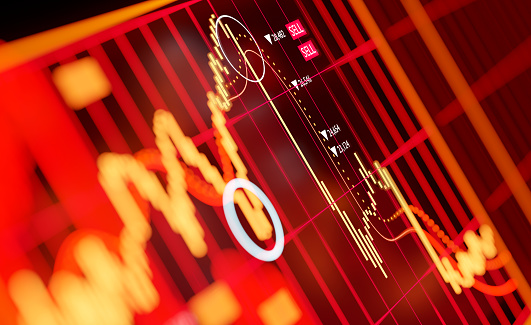What is the Meaning of Economy?
The word economy comes from a Greek word meaning household management. When a nation exports more goods than it purchases, its balance of trade is positive. Conversely, if it buys more than it sells, it has a negative balance of trade. A positive balance of trade is good for a nation’s future. A negative balance of trade is bad and can be a result of protectionist policies.
Microeconomics is the study of individual behavior
Microeconomics is a branch of economics that focuses on individual participants in the economy. It differs from macroeconomics, which focuses on collective behavior. Microeconomics studies individual decisions, such as those of consumers and producers, to explain the functioning of individual markets and economic systems. Specifically, microeconomic theories consider how individuals make and use decisions to maximize their utility and profits.
Microeconomics has a rich tradition of studying the way individual choices are made in larger contexts. The traditional context for microeconomics has been markets, where buyers and sellers engage in transactions. The general equilibrium theory is a well-known example of a market-based approach to microeconomics, as it considers the individual behavior of buyers and sellers. Theorists such as Kenneth Arrow, Gerard Debreu, and Lionel McKenzie developed this approach to microeconomics.
The basic principles of microeconomics have applications beyond the economic world. For example, in the study of health, nutrition is only one aspect of a healthy life. People must also exercise, maintain good hygiene, and take medications when needed. However, nutrition remains a very important aspect of living a healthy lifestyle. It is important to ask questions about which foods are healthiest for our bodies, and the trade-offs between health and enjoyment. Similarly, microeconomics is the study of individual behavior, and it’s often compatible with ideas from psychology and sociology.
The basic framework of microeconomics is based on the theory of supply and demand. This concept measures the quantity of goods that consumers would purchase at a given price, as well as the amount of products that producers would be willing to provide at a certain price. These three variables affect prices and the level of output.
Macroeconomics is the study of the overall performance of an economy
Macroeconomics is a broad area of economics that involves the study of the performance of an economy as a whole. The goal of macroeconomics is to maximize the standard of living for citizens, achieve stable economic growth, and increase productivity while controlling inflation. A wide range of indicators are used to assess different aspects of an economy’s performance. One of the most important indicators is the GDP, which represents the total value of goods and services produced by an economy in a particular year. Usually, GDP data is released on a quarterly basis.
Macroeconomics also examines the effects of government spending and policies on the overall economy. While microeconomics focuses on the individual behavior of businesses and consumers, macroeconomic factors affect all of them and influence each other in unpredictable ways. For example, in the 1930s, the United States spent millions of dollars on public works programs. Nowadays, renewable energy is a hot topic in household circles, and macroeconomics can be used to understand the effects of green investments and policies on the economy.
Understanding economics helps investors predict the future. While microeconomics focuses on the costs of producing goods and services, macroeconomics also considers costs of raw materials, labor, and shipping. When these costs increase, production may decrease. This could cause inflation at a macro level. As a result, prices of raw materials are likely to rise, which could impact global demand.
Opportunity cost
The concept of opportunity cost is an important one for resource allocation. Yet few studies explicitly consider the notion. Further, the range of opportunity costs can be unclear without clearer perspectives. As a result, it can be difficult to draw any definitive conclusions. Nonetheless, it is worth discussing the concept in an economics context.
Opportunity cost is the income we forfeit when we do not use our labor in another way. For example, a full-time worker in a value-added business might make $40,000 per year. But in the job market, this worker might earn $40,000, and he or she could have opted to make $40,000 instead.
In economics, we use the production possibilities curve to capture the notion of opportunity costs. Various points on this curve represent efficient and inefficient ways to produce a good. Points beyond this curve are inefficient and unobtainable. The opportunity cost is the amount of one good that is sacrificed to produce more of another.
The concept of opportunity cost is crucial in debates about economic growth. Ecological and standard economics look at the economy as a whole, and each choice has a corresponding opportunity cost. Ecological economics takes a more holistic view of the economy and considers it to be a finite ecosystem.
Cost-benefit principle
The Cost-benefit principle is a common-sense rule that helps companies determine whether the cost of providing a certain service is worth the benefit. For example, it may not be beneficial to provide financial statements to a user if the cost would be greater than the benefit. If the costs of providing the information outweigh the benefits, it may be better to stop providing it altogether. Two examples will help you understand the principle more clearly.
Cost-benefit analysis is fundamental in economics, and it helps to make rational decisions. If you are planning to buy a new video game, you will have to consider the benefits and costs of the new purchase. For example, if the new video game costs $100, but it costs only $80 at another store, you will save $5.
The cost-benefit rule is used to analyze the cost-benefit relationship between two variables, supply and demand. Economists are aware of the relationship between marginal costs and benefits, and are able to apply the rule to many different circumstances. However, it is not generally explained to introductory students of economics.
The Cost-benefit principle can be useful for students who have difficulty understanding how cost-benefit analysis works. It can help them get through economics class by helping them understand the rationality of economic decisions.
Marginal cost
The marginal cost of an economy is the change in the total cost of production as the quantity produced increases. This change is the result of increased production and demand, and is a key element of economics. The marginal cost is a major cause of inflation, but it is also an important aspect of a healthy economy.
Basically, marginal cost is made up of two main components, fixed costs and variable costs. These costs often increase alongside marginal cost, but they can also contribute to it. For example, if a company produces a machine worth $500k, the cost of the machine will rise as the amount of goods produced increases. The cost of the machine will be included in the marginal cost when the production of the machine reaches a certain point.
The marginal cost of an economy is calculated by dividing the cost of production by the number of units produced. For example, if a factory produces 5,000 units, and if the demand for running shoes increases to 10,000, the cost of producing that many units will increase. At that point, the total cost of the production of those shoes would be $150,000 – $10 = $15.
The marginal cost of an economy also provides an insight into the efficiency of a production schedule. It is important for a company to determine where they can achieve economies of scale and reduce the cost per unit. It is also important to understand that the faster a company can turn around production, the more profit it will generate.
Producer surplus
Producer surplus is the amount of revenue a business can expect to generate from selling its goods. It is the difference between the price it receives for its product and its minimum cost of production. This profit represents the economic benefit to all the participants in the economy. The amount of producer surplus is typically calculated as the area above the producer supply curve at a price point (P(i)). The area is the value of the producer’s sales revenue (Q(i)), divided by the cost of production (P(i).
In competitive markets, the price is set by a number of producers competing in the same industry. Monopolies, on the other hand, are characterized by one company monopolizing the market. This allows a single company to establish itself as a price leader. In such a situation, consumers have no other options and can’t get substitutes for their goods. This means that producers are able to earn huge profit margins. However, this surplus can be broken up by a new entrant selling the product below the market price.
The difference between the price companies are willing to sell their goods for and the price they receive for them is called producer surplus. Producer surplus is an important component of the economic welfare. Despite this fact, not all companies have to generate surplus. The market must be balanced to ensure that both consumers and producers can benefit from the market.



